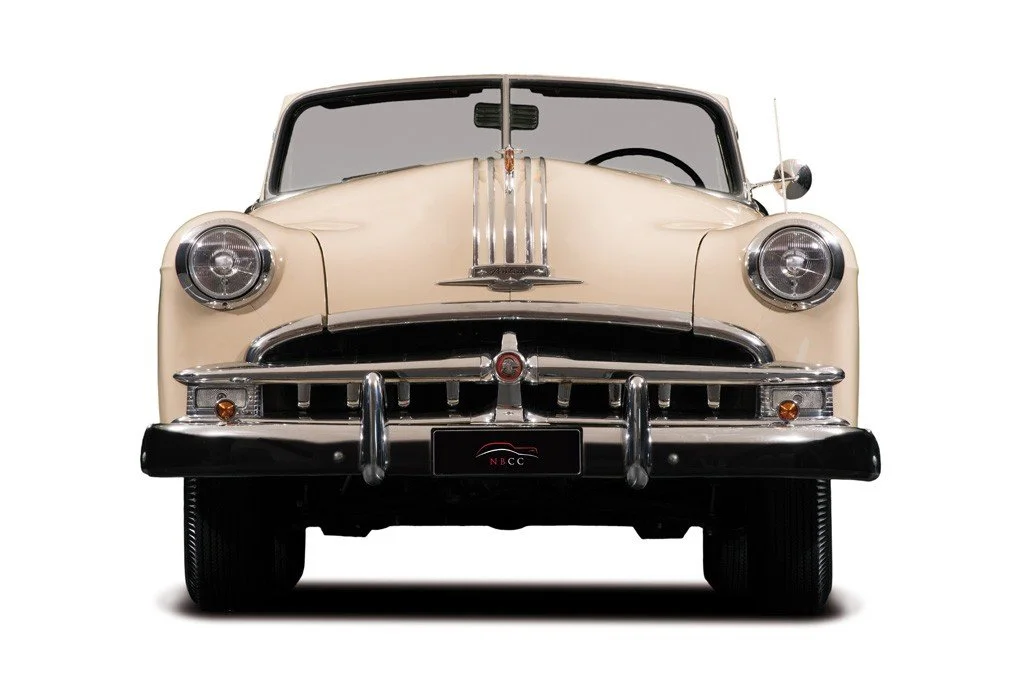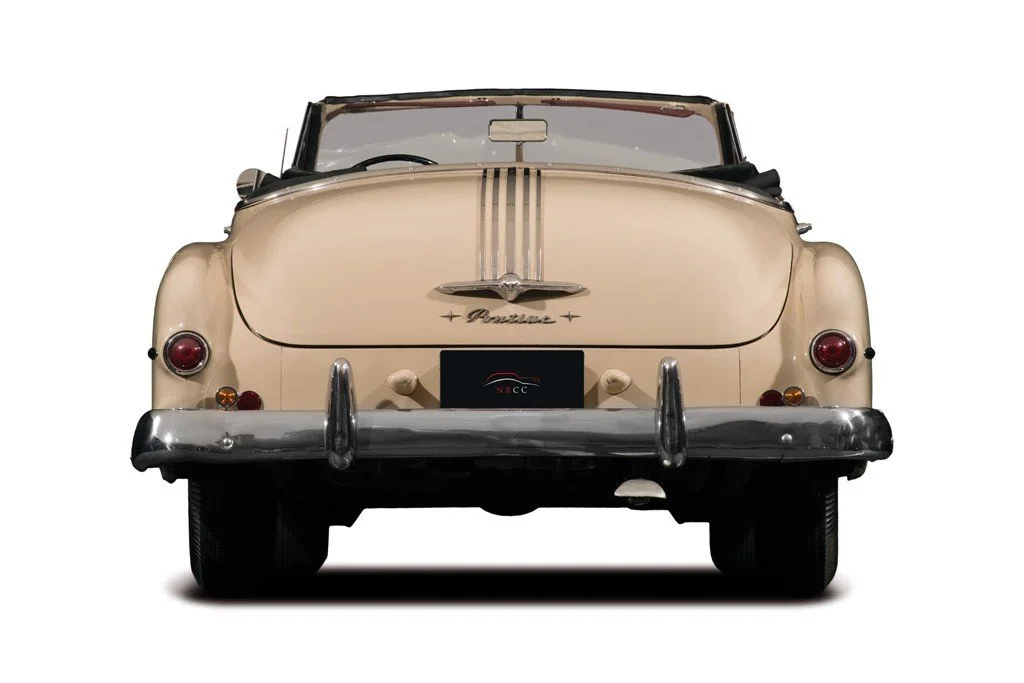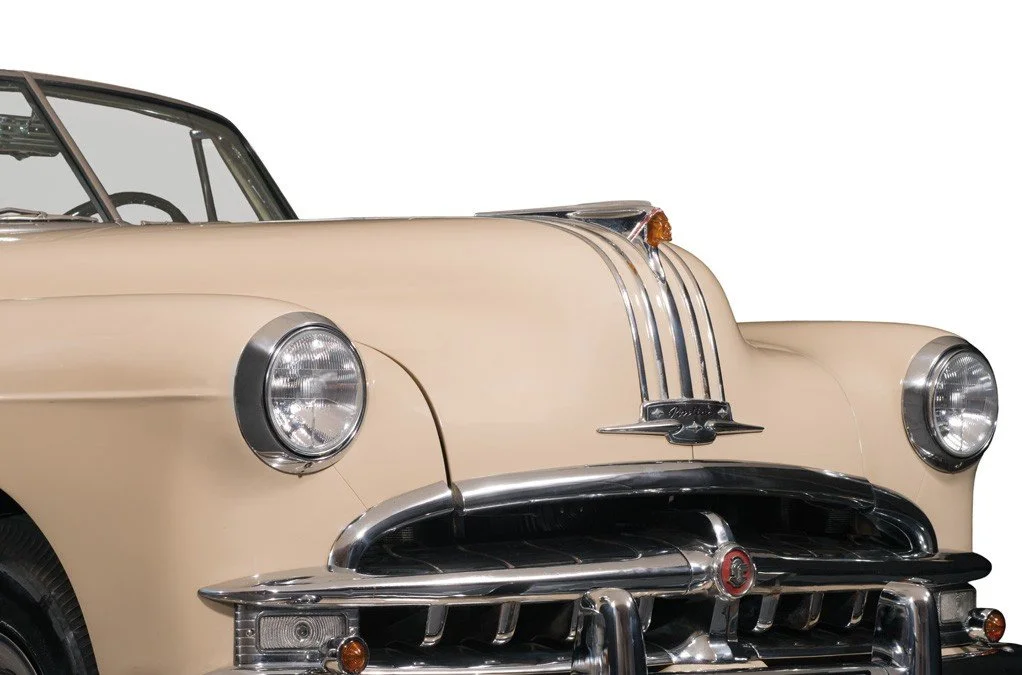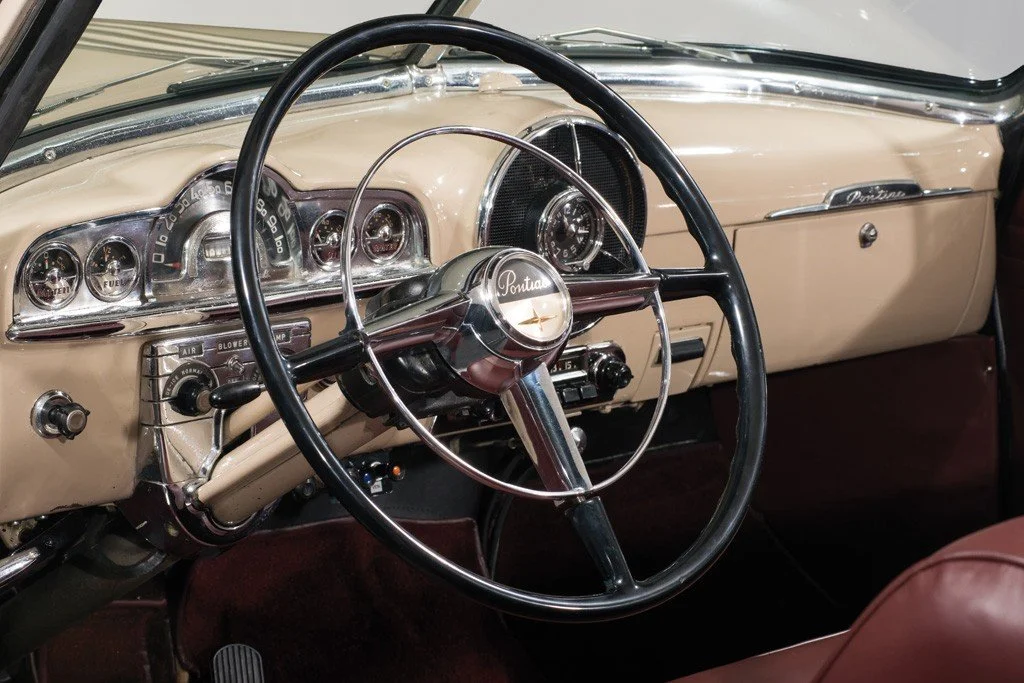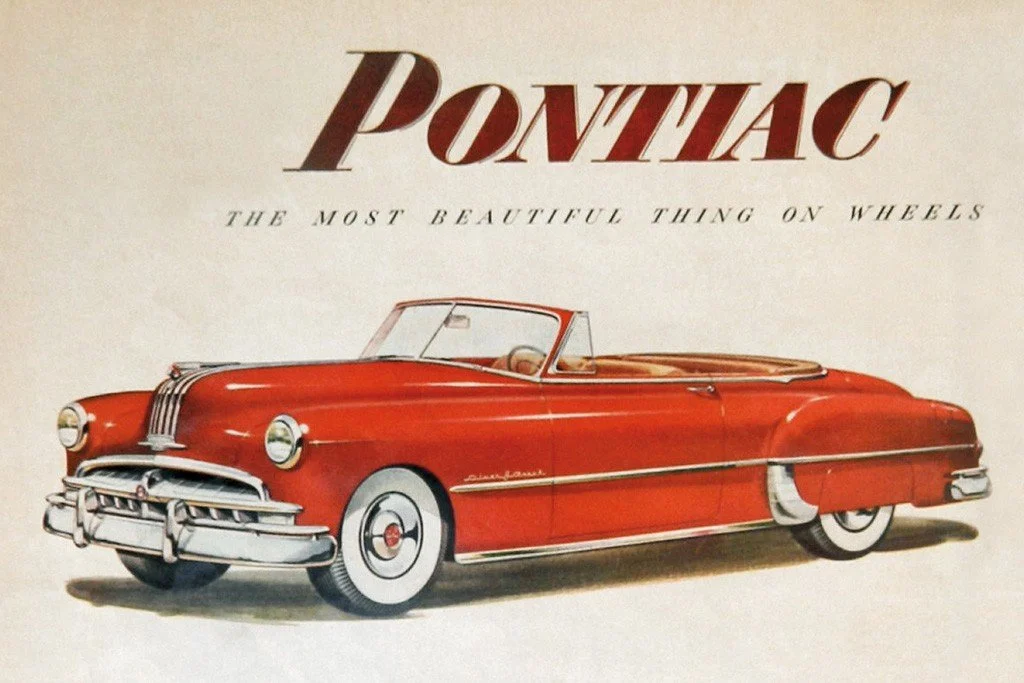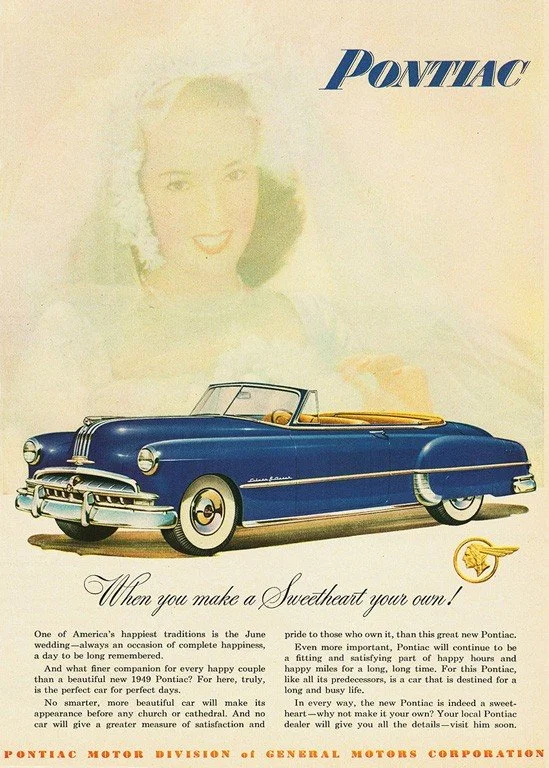-
Within the Nicola Bulgari Collection we also find this Pontiac Chieftain DeLuxe Convertible Coupe, classified as Model 2567. The first two numbers (25) identify series Six, with a six-cylinder inline engine, while the third and fourth numbers (67) indicate the 2-door Convertible version. This example was being rented out in Italy for cinema shoots by the agency Cartocci in Rome. It featured in scenes from the movie “Lucky Luciano” and in other films produced at Cinecittà.
When it was bought by the Bulgari Collection in July 2012 it needed moderate restoration, as all its parts were present but many had to be renovated. Work started immediately freshening up the paintwork, keeping its Nankeen Cream color (a color at the time reserved for the convertible version), while the chrome was just polished. The original engine was given a complete overhaul, and the interior, from the carpet to the door panels and seats, redone in Burgundy. The restoration was completed a year after purchase, and today this Pontiac is an excellent example of one of the first Chieftain models of the post-war period. -
Company
General MotorsWheelbase
120inInterior trim
BurgundyBrakes
front and rear drumsMake
PontiacLength
202.5inEngine
inline 6 - 239.2cidTires
7.10x15Model
Chieftain Six DeLuxe - Model 2567Width
75.7inCarburetor
1 Carter 1-barrelOriginal Price
$2,030Body style
2-door ConvertibleWeight
3670lbsHorsepower
93hp @ 3400rpmProduction
40,139Model year
1949Exterior paint
Nankeen Cream/Black topTransmission
Synchromesh 3-speed manual -
Pontiac’s lineup was restyled in 1949 by Herman Kaiser along Harley Earl’s guidelines. GM's ubiquitous design director Harley Earl oversaw the transition to the new Fisher-built A-body platform, but Pontiac stylists Bob Lauer and Joe Schemansky worked at least mostly independently from Chevrolet. Longtime Pontiac and Fisher Body engineer Herman Kaiser oversaw the mating of the new designs to the platform. The cars featured a full-width body and curved two-piece windshield common to Cadillac and Oldsmobile. Two models were built, the Streamliner and Chieftain, and both rode on a 120-inch wheelbase. Both could also be ordered with either a 239-cid six-cylinder L-head engine that generated 90 hp, or a 248-cid straight-eight mill that developed 104 hp.
The new cars did keep two configurations for the new sheetmetal, with Chieftains sporting the traditional bodies, and the Streamliner series sporting fastbacks. Perhaps because of their junior Cadillac look, until this point the fastbacks had been selling as if they'd invented the car, and that was probably on Pontiac's mind for 1949, but it didn't turn out that way. A mere two-inch reduction in its wheelbase somehow transformed the Streamliner from a swan into a slightly less-attractive swan, and, while no ugly duckling, the Chieftains led by a length.
The Chieftain was Pontiac’s upmarket model, replacing the 1948 Pontiac Torpedo, and it essentially offered more trim and an extra seating space for approximately $25 more than the Streamliner. Like the Streamliner, the Pontiac Chieftain could be ordered with DeLuxe trim, which added a full-length side spear and gravel guards to the rear fenders. Base Chieftains could be ordered as business coupes, two-door sedan coupes, and two- and four-door sedans. The DeLuxe Chieftains traded the utilitarian business coupe for a convertible.
But the big news that year was the introduction of the Hydra-Matic Drive as a $185 option. This was a key factor in boosting Pontiac's model-year volume to near 235,500 because it was so well suited to the eight-cylinder models that buyers increasingly preferred. The A-body has a cantilevered, cross-braced frame, with straight side rails. The new design extended the synchromesh transmission to the same length as the Hydra-Matic, to allow Pontiac to use the same length driveshaft for all engine and transmission combinations. This put the straight-six engine as much as four inches farther forward and, with the 248.9-cu.in. straight-eight, plenty of weight over the front wheels. The outstanding new proportions also made it look wider, but while elbowroom was up inside, the 7/8-inch width was almost three inches narrower than before. The lower stance looks more dashing than the 1948 models, and the curved (a Pontiac first), two-piece windshield appears to be more steeply raked than before, although the angle is largely unchanged. Postwar inflation pushed up prices in 1949, but volume rose to nearly 305,000 units.


